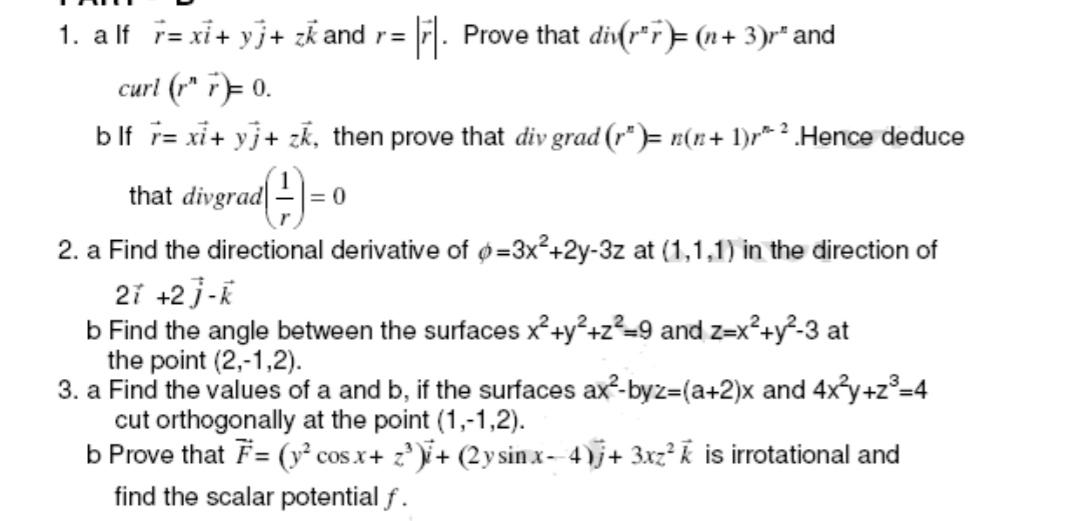Question
1. alf r=xi+ yj+ zk and r= . Prove that div(rr)= (n+3)r* and curl (r F)= 0. blf r= xi+ yj + zk, then

1. alf r=xi+ yj+ zk and r= . Prove that div(rr)= (n+3)r* and curl (r" F)= 0. blf r= xi+ yj + zk, then prove that div grad (r")= n(n+1)* .Hence deduce that divgrad d ( ) = 0 2. a Find the directional derivative of p=3x+2y-3z at (1,1,1) in the direction of 2 +2j-k b Find the angle between the surfaces x+y+z=9 and z=x+y-3 at the point (2,-1,2). 3. a Find the values of a and b, if the surfaces ax-byz=(a+2)x and 4xy+z=4 cut orthogonally at the point (1,-1,2). b Prove that F= (y cosx+ 2)+ (2y sinx-4)j + 3xzk is irrotational and find the scalar potential f.
Step by Step Solution
3.33 Rating (147 Votes )
There are 3 Steps involved in it
Step: 1

Get Instant Access to Expert-Tailored Solutions
See step-by-step solutions with expert insights and AI powered tools for academic success
Step: 2

Step: 3

Ace Your Homework with AI
Get the answers you need in no time with our AI-driven, step-by-step assistance
Get StartedRecommended Textbook for
Calculus
Authors: Dale Varberg, Edwin J. Purcell, Steven E. Rigdon
9th edition
131429248, 978-0131429246
Students also viewed these Physics questions
Question
Answered: 1 week ago
Question
Answered: 1 week ago
Question
Answered: 1 week ago
Question
Answered: 1 week ago
Question
Answered: 1 week ago
Question
Answered: 1 week ago
Question
Answered: 1 week ago
Question
Answered: 1 week ago
Question
Answered: 1 week ago
Question
Answered: 1 week ago
Question
Answered: 1 week ago
Question
Answered: 1 week ago
Question
Answered: 1 week ago
Question
Answered: 1 week ago
Question
Answered: 1 week ago
Question
Answered: 1 week ago
Question
Answered: 1 week ago
Question
Answered: 1 week ago
Question
Answered: 1 week ago
Question
Answered: 1 week ago
Question
Answered: 1 week ago
Question
Answered: 1 week ago
Question
Answered: 1 week ago
Question
Answered: 1 week ago
View Answer in SolutionInn App



